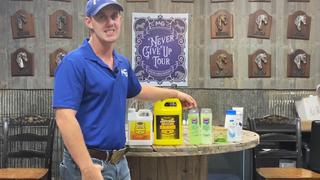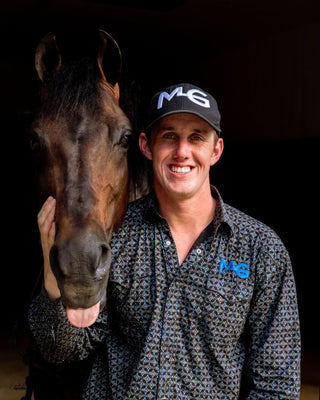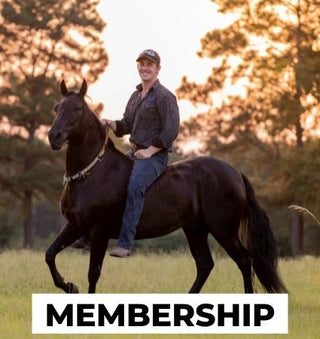Watch the Video Here or continue reading below!
In today’s horse training session, we’re diving into one of my favorite softening exercises—the 7th Grade Spiral. Whether you're working with a hot Paso, a forward Off-The-Track Thoroughbred, or a buck-happy Gypsy Vanner like Mr. Waffle, spirals are your secret weapon for transforming tension into softness and resistance into respect.
Let’s talk about the do’s and don’ts of this essential groundwork technique to set your horse up for lasting success.
✅ DO: Use Spirals to Soften and Gain Respect
Why spirals are the #1 softening exercise
Spirals are not just a drill—they’re a mindset shift. When you put a horse like Mr. Waffle into a spiral, you're saying, "I know you're big, strong, and used to calling the shots, but now you're going to listen to the halter—not your impulses."
A spiral is created by:
-
Locking your inside hand to your knee to hold the bend.
-
Using your outside rein to pulsate and ask for movement, especially backing up.
-
Keeping your hands low to prevent the horse from bracing or powering through with a high head.
This is the foundation of softness. It teaches the horse to break at the poll, yield to pressure, and prioritize your cues over their own instincts.
❌ DON’T: Muscle Through It
Avoid jerking, pulling, or overpowering the horse
One of the biggest mistakes people make is trying to force their horse into submission. Spirals are all about finesse, not force.
“Be persistent, not powerful.”
Instead of yanking, tap-tap-tap with the rein until the horse gives a step, then release. This builds trust and teaches them that softness equals relief.
✅ DO: Redirect Bad Behavior Like Bucking or Rearing
The spiral puts the ball in your court
Mr. Waffle had a history of bucking people off—and succeeding. That confidence made him dangerous. Spirals allowed us to safely challenge that mindset.
When the horse goes to buck or rear:
-
Release the outside rein so the horse turns in a tight circle.
-
It’s hard for a horse to buck with their head turned.
-
They quickly learn it’s easier to follow than to fight.
You can use spirals on:
-
Hot walkers
-
Pacy gaited horses
-
Anxious or forward OTTBs
-
Pushy, strong horses
❌ DON’T: Tiptoe Around Tough Horses
Stand your ground—spirals give you the upper hand
A horse like Mr. Waffle will make you want to tiptoe—he's big, confident, and used to intimidating people. But spirals let you challenge that power without confrontation.
By keeping him bent and backing, you chip away at resistance little by little. You're not just correcting behavior—you're reshaping the horse’s entire mindset.
✅ DO: Reward the Small Wins
Timing is everything in a spiral
Every time your horse takes a step, releases tension, or gives to the rein—you release. That’s how you build softness.
Eventually, your horse becomes so light and responsive, you can guide them with the gentlest cue. That’s when you know the spiral has done its job.
Final Thoughts: Spirals Build Confidence for Horse and Rider
The spiral is my go-to method for taking a resistant, dangerous, or overreactive horse and making them safe, soft, and willing. With consistency and good timing, you’ll be able to do anything with your horse—from arena work to trail riding.
So remember:
-
Be patient.
-
Be precise.
-
And don’t pull—pulsate.









